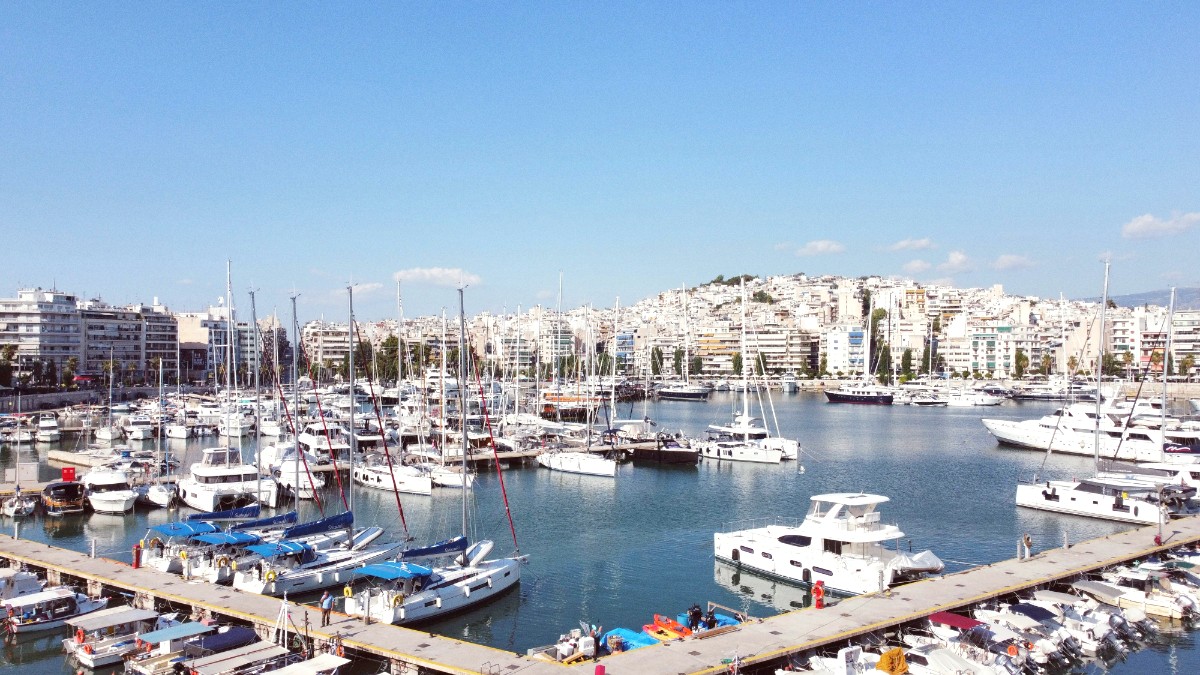
Athens, Greece
Greek cuisine is deeply rooted in the Mediterranean diet, emphasizing fresh, seasonal ingredients, generous use of olive oil, and aromatic herbs. As a port city, Piraeus has a strong culinary tradition centered around the daily catch from the Aegean Sea.
Meals are often a social event, meant to be enjoyed slowly with family and friends.
Piraeus mainly features typical Greek cuisine, specializing in seafood due to its port location. You find an abundance of fresh fish tavernas.
Meals are a significant social occasion in Greece, often enjoyed slowly with conversation and company. Do not expect rushed service; savor the experience.
Dinner typically starts later than in many Western countries, often after 9:00 PM, especially in summer. Lunch is usually from 1:00 PM to 3:00 PM.
Gyros consists of meat (pork or chicken) cooked on a vertical rotisserie, sliced thin, and served in pita bread with tomato, onion, tzatziki, and sometimes fries. Souvlaki refers to grilled meat skewers.
Find them at any "souvlatzidiko" (souvlaki shop) throughout Piraeus.
Given Piraeus's port location, fresh fish is a must-try. Locals prefer it simply grilled with olive oil and lemon. Ask to see the fish before it is cooked to confirm freshness.
Available at psarotavernas (fish tavernas) in Mikrolimano and Pasalimani.
Fresh calamari, lightly floured and fried until crispy. Widely available at seafood tavernas, a great appetizer.
Octopus (Octapodi): Often grilled and marinated, or in stews. Moussaka: Layers of seasoned minced meat, eggplant, and béchamel sauce.
Fried dough balls drizzled with honey syrup and sprinkled with cinnamon. A sweet, comforting treat.
A sesame-covered bread ring, often eaten for breakfast or a quick snack. Find them at bakeries and street vendors throughout the city.
True fine dining with Michelin stars is limited in Piraeus itself. However, some upscale seafood restaurants around Pasalimani (Marina Zeas) feature a more refined experience with high-quality ingredients.
Numerous tavernas and restaurants feature traditional Greek cuisine. You find these, especially around Pasalimani, Mikrolimano, and the main port area.
Souvlatzidika are ubiquitous for affordable and delicious gyros and souvlaki. Fournoi (Bakeries) feature a wide range of pastries, savory pies, and fresh bread.
Some restaurants feature Italian, Asian, or other international cuisines. Find these in the more tourist-oriented areas of Pasalimani and the city center.
These cater to diverse tastes.
International options broaden dining choices for visitors. Specific searches may be needed for certain global dishes.
Enjoy familiar flavors or new culinary explorations.
Dinner often starts after 9:00 PM, especially in summer. This reflects a leisurely approach to meals.
Meals are a significant social occasion, enjoyed slowly with conversation and company.
Lunch typically from 13:00 to 15:00. Breakfast is often light, consisting of coffee and pastry.
Learning a few Greek phrases for ordering or dietary needs enriches the experience.
Always confirm ingredients, especially for complex dishes or if severe allergies exist. Simple, grilled dishes are often safer.
Seafood tavernas typically have straightforward preparations.
Olive oil is a cornerstone of almost every Greek dish. Feta, graviera, and kasseri are common cheeses. Specify if dairy is an allergen.
Lemon, garlic, onions, and Greek yogurt are important flavor components.
Do not hesitate to communicate your needs clearly. Most tavernas and restaurants are accustomed to dietary requests.
Use translation apps like Google Translate or a Greek phrasebook to communicate your dietary restrictions effectively. Writing down your allergies in Greek to show to restaurant staff is highly recommended.
Most cooking classes focusing on Greek cuisine are in central Athens, easily accessible from Piraeus via the Metro. These classes are a hands-on way to learn about Greek ingredients and traditional recipes.
Not directly in Piraeus, but possible in the wider Attica region. These visits let you see where traditional Greek products like olive oil, wine, or honey are made.
Check local listings for seasonal food festivals in Piraeus or Athens. These events honor local produce, traditional dishes, and often feature live music and dancing.
Fried dough balls drizzled with honey syrup and sprinkled with cinnamon. A sweet, comforting treat.
Layers of delicate filo pastry filled with chopped nuts (often walnuts or pistachios) and sweetened with a fragrant syrup.
Choose your fish directly from the display for ultimate freshness. This practice ensures a meal of high quality.
The ambiance of dining by the small fishing boats enhances the experience. It is a genuine local culinary highlight, especially in the evenings.
Pair your seafood with local wines or ouzo for an authentic Greek dining experience.
Piraeus reflects Greece's maritime identity in its cuisine, with a strong focus on fresh seafood.